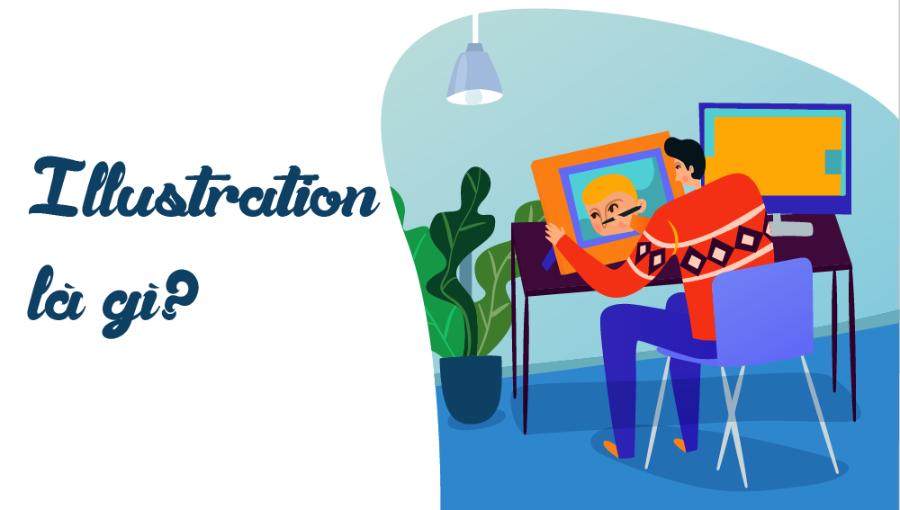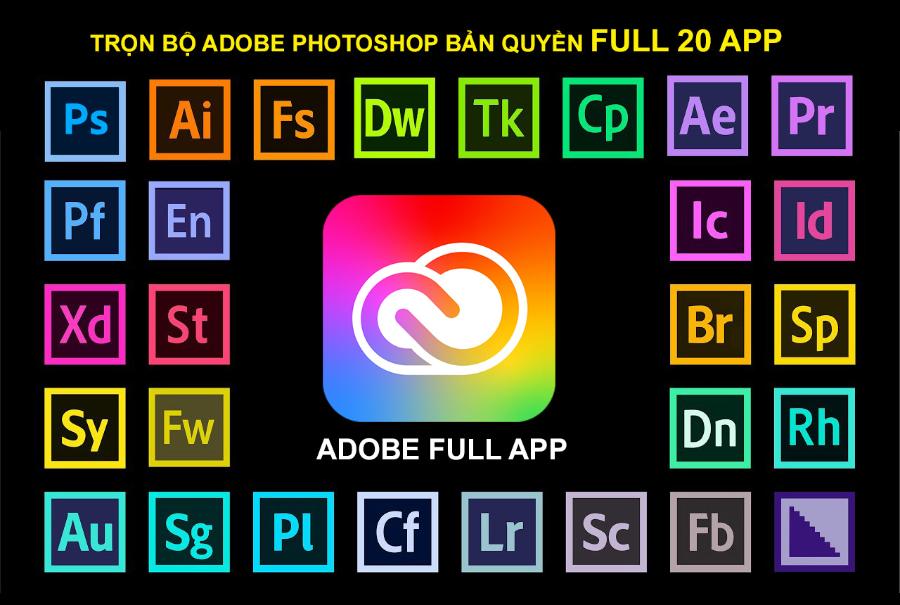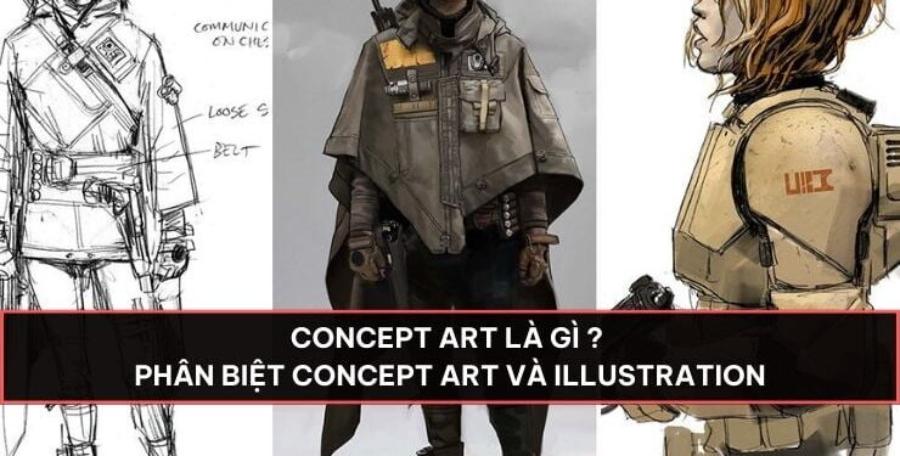Best Selling Products
What Is Illustration Art And What Designers Need To Know
Nội dung
- 1. General definition of Illustration Art
- 2. Popular types of Illustration Art
- 3. Why is Illustration Art important in the creative industry?
- 3.1. Illustration Art in advertising
- 3.2. Illustration Art in product design industry
- 3.3. Illustration Art in animation production
- 3.4. Illustration Art in books and newspapers
- 4. Techniques in Illustration Art
- 4.1. Hand drawing
- 4.2. Digital drawing
- 4.3. 3D Illustration
- 5. Applications of Illustration Art in life
- 5.1. Illustration Art in graphic design
- 5.2. Illustration Art in advertising and communication
- 5.3. Illustration Art in product packaging
- 5.4. Illustration Art in books and magazines
- 5.5. Illustration Art in web and application design
- 5.6. Illustration Art in animation and games
- 6. Conclusion
Learn what Illustration Art is and its important role in graphic design. How designers can apply it effectively in their work.

In the art world, Illustration Art has become an indispensable part, playing an important role in conveying messages, emotions and ideas. This is an art field that combines creativity and technique, with the goal of illustrating stories, products or concepts through images. Join Sadesign to learn more about Illustration Art, its outstanding features and its role in today's industries.
1. General definition of Illustration Art
Illustration Art is an art form that uses images to illustrate a story, idea, product or concept. Through the use of hand-drawn forms, computer graphics, or traditional techniques, artists can convey messages in a visual, vivid and easy-to-understand way. Unlike conventional paintings, Illustration Art focuses on conveying a clear idea, helping viewers easily grasp the message that the work wants to convey.
.jpg)
Outstanding features of Illustration Art
Illustration Art has distinct characteristics that make it unique and recognizable:
Strong Visuality: Illustration art relies heavily on images to convey messages, so it has the ability to reach out and make a strong impression on viewers immediately.
Unlimited Creativity: One of the attractive factors of Illustration Art is the freedom in creativity. Artists can freely express their ideas without being bound by strict rules as in traditional art.
Variety of styles: From hand-drawn illustrations, 3D illustrations, to digital illustrations, Illustration Art covers a wide range of styles and techniques, suitable for all types of creative projects.
Combining art and commerce: Illustration art not only has artistic value but is also widely applied in fields such as advertising, product design, animation, picture books, and many other industries.
2. Popular types of Illustration Art
Illustration Art does not have just one form, but can be classified into many different genres, each genre brings its own uniqueness. Here are some common types of illustration art:
.jpg)
Hand-drawn illustration: This is a traditional form of illustration in which artists use pencils, ink, or watercolors to create works of art. Hand-drawn illustrations retain a subtlety and emotion that digital media simply cannot replace.
Digital Illustration: With the development of technology, digital illustration has become a mainstream trend in the creative industry. Graphic software such as Adobe Illustrator, Photoshop has helped artists easily create sharp and vivid illustrations.
3D Illustration: The combination of art and technology has brought Illustration Art a great step forward, when artists can create vivid, realistic images using 3D simulation software.
Illustration for children's books: This is a special genre of illustration art, where the images not only support but also help develop the content of the story for children. Vivid, easy-to-understand images are an important factor in helping children easily access and love books.
3. Why is Illustration Art important in the creative industry?
Illustration Art has become an indispensable part of the design field, helping brands, artworks, and communication campaigns convey messages in a vivid and impressive way. Considered a bridge between abstract ideas and audiences, illustrations provide an accessible and emotional visual language. More than just drawings, Illustration Art has the ability to evoke imagination, stimulate creativity, and create inspiring stories, thereby enhancing the value of products and services.
3.1. Illustration Art in advertising
In the field of advertising, images play a decisive role in attracting customers' attention. Successful advertising campaigns often use Illustration Art to create eye-catching and memorable images. Illustrations can convey brand messages clearly and impressively, combining creativity with commercial messages.
3.2. Illustration Art in product design industry
Illustration Art also plays an important role in designing packaging, logos, and product labels. Illustrations not only make products more attractive but also clearly reflect the core values of the brand. Products with beautiful and delicate illustrations will easily win the hearts of customers.
.jpg)
3.3. Illustration Art in animation production
In the animation industry, illustration art is an indispensable element. Vivid images and characters drawn or designed with 3D technology are the core of the success of each animated film. Illustration Art helps filmmakers express a colorful, imaginative world that attracts audiences.
3.4. Illustration Art in books and newspapers
From children's books to newspaper publications, illustrations have always played an important role in highlighting content. Illustrations not only add appeal but also help readers gain a deeper understanding of the concepts, events or stories in the article.
4. Techniques in Illustration Art
Each work tells a story through each stroke, color, and path of the pen. Mastering techniques is the key to illustrators creating vivid images that touch the emotions of viewers. From traditional methods such as hand drawing to modern tools such as digital software, each technique has its own characteristics, contributing to enriching the global art picture.
4.1. Hand drawing
Hand drawing is one of the traditional techniques of Illustration Art, helping to create vivid images with high detail. The use of pencil, pen, and watercolor creates works that are emotional, natural and personal.
4.2. Digital drawing
With the development of technology, digital drawing has become an indispensable part of modern Illustration Art. Graphics software such as Adobe Photoshop, Illustrator help artists easily manipulate and create high-quality illustrations. The strength of digital drawing is its flexibility and easy editing ability.
4.3. 3D Illustration
3D illustration brings a new dimension to artwork. Software like Blender or Autodesk Maya help artists create 3D models, taking illustrations to the next level, with realistic lighting and shadow effects.
5. Applications of Illustration Art in life
.jpg)
Illustration Art not only exists in the art field but is also widely applied in many different industries. Some prominent applications include:
5.1. Illustration Art in graphic design
In the graphic design industry, Illustration Art is widely used to create unique images for websites, advertisements, product packaging, and printed publications. Designers use illustration art to highlight the message of a brand or product, helping to attract attention and create a strong impression on customers. Illustration Art helps publications become more vivid, has the power to convey information clearly and easily understood.
5.2. Illustration Art in advertising and communication
Any advertising campaign needs creativity to attract viewers. Illustration Art has become a powerful tool in the advertising industry as it helps make messages more vivid and accessible. Using illustrations instead of real-life images or complex graphics helps reduce boredom and creates a sense of closeness with consumers.
5.3. Illustration Art in product packaging
When customers pick up a product, the packaging design is the first impression they get. A beautiful and unique packaging will attract attention immediately, increasing the possibility of sales. Designers use Illustration Art to create creative product packaging, not only to make the product stand out but also to create an emotional connection with customers. For example, cute illustrations on food, cosmetic or household product packaging can create a strong impression.
5.4. Illustration Art in books and magazines
Illustration art is indispensable in children's books and magazines. Illustration Art helps create a lively space, making it easy for readers to visualize and absorb the content of the article. Especially for children, illustrations are the means to help them understand and remember the story or lesson that the book wants to convey.
5.5. Illustration Art in web and application design
Nowadays, most websites and applications use Illustration Art to make the interface lively and easy to use. Illustrated icons and animations are not only aesthetically pleasing but also help users easily find and interact with the features of the website or application. This creates a more pleasant and convenient user experience.
5.6. Illustration Art in animation and games
In the entertainment industry, Illustration Art is an indispensable factor. Game and animation producers often use illustration art to create characters, scenes and backgrounds in games or animated films. Illustrations not only help characters come to life but also create a separate world, attracting viewers.
6. Conclusion
Illustration Art is not only a creative profession but also an important part in connecting and conveying messages. Illustrations have great power in creating deep impressions and helping viewers better understand the stories, products, or ideas that the artist wants to express. With the continuous development of technology and techniques, illustration art will continue to develop and play an important role in many fields.












































